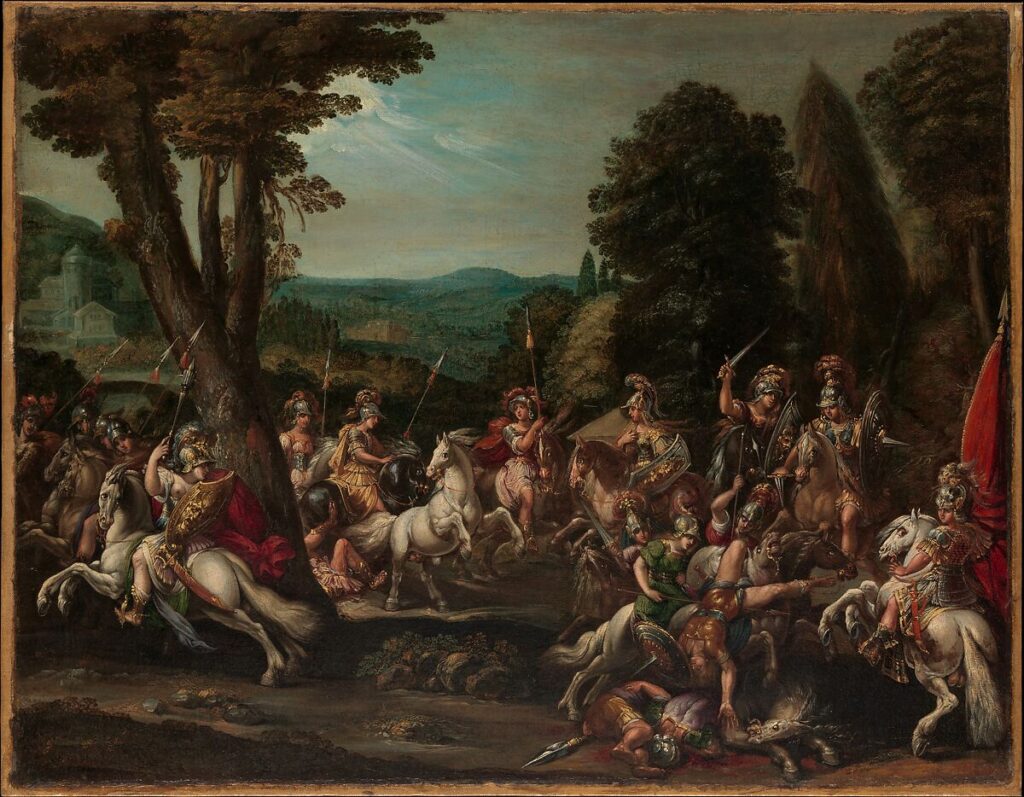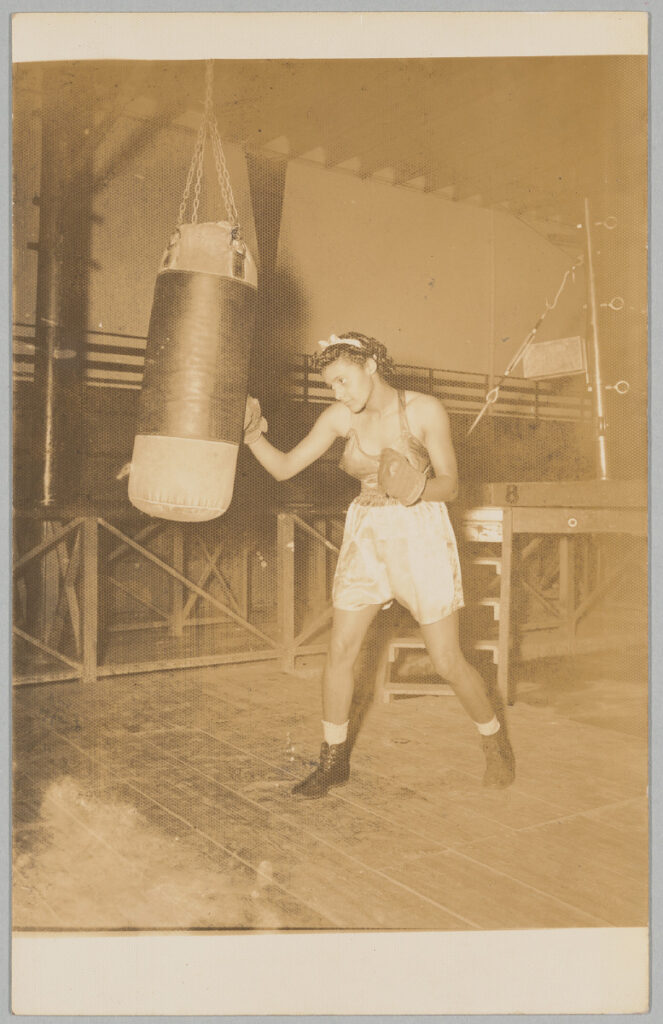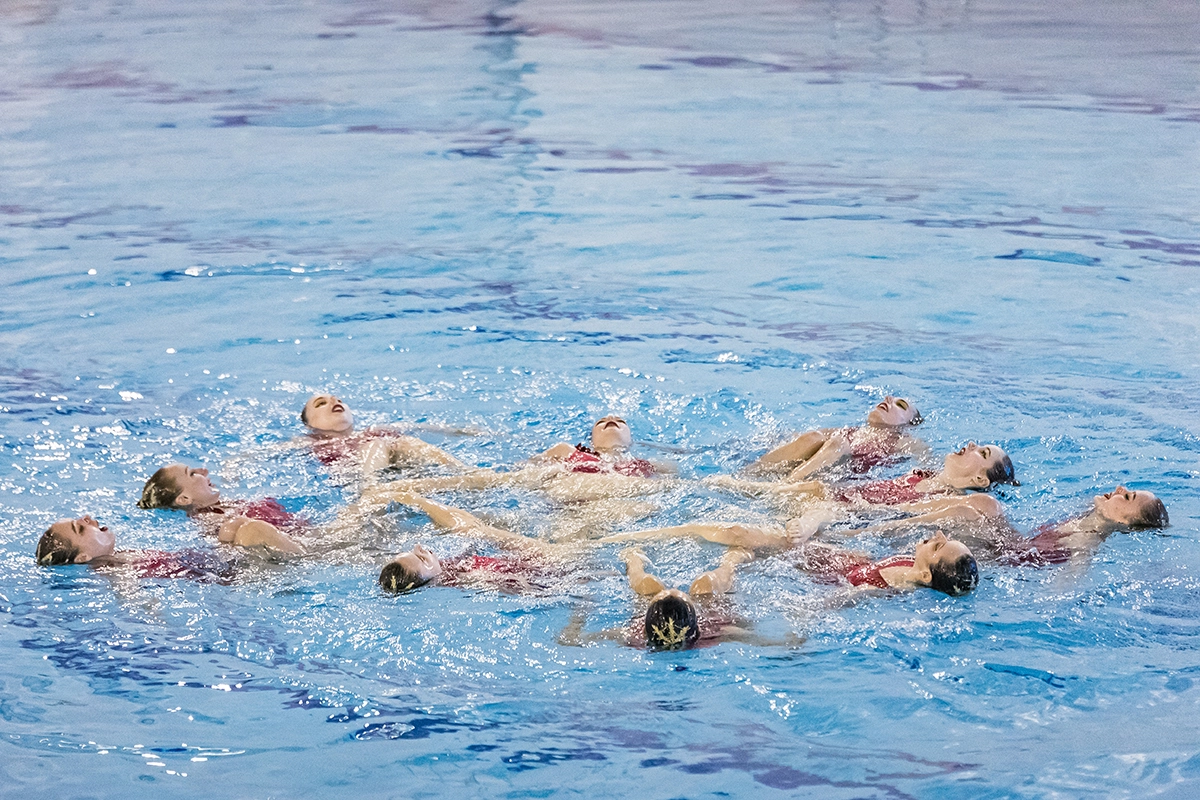
The Triumph of the Amazons and Imane Khelif's Beautiful Strength
Artist
Year
Country
Location of the visited exhibition
Material/Technique
Dimensions
The Greek myth of the Amazons, warrior women who lived in a matriarchal society, represents one of the earliest narratives in art and literature of strong, independent women. The Amazons were not only a symbol of physical power, but also of defiance of social norms. However, this power is often considered a threat. In Greek culture, their strength makes them fearsome figures, and the very qualities that elevate them are what relegate them to the margins of mythology as different and other. The French painter Claude Déruet depicted them in their majesty in the painting Triumph of the Amazons.

This dualism is also reflected in modern society, where women who push the boundaries imposed by society can be stigmatized. Strong women, who compete in usually masculine fields, are sometimes perceived as masculine or aggressive, thus perpetuatating the idea that strength and independence are not suitable traits for a woman.
The Triumph of the Amazons: The Epic of Female Strength
Claude Déruet’s painting Triumph Of The Amazons captures the essence of this myth. In this work, the Amazons not only fight, but triumph in a scene that expresses power, unity, and pride. The French painter uses intense colors and bold lines to highlight the physicality of the warriors. The bodies are muscular, the poses aggressive and dominated by an awareness of their own power. Déruet took inspiration from the Italian sculptor and painter Antonio Tempesta, with whom he studied in Rome for several years. Tempesta’s works focus mainly on battles, biblical scenes, and mythological elements.
The painting celebrates not only a physical victory, but also a symbolic victory. The Amazons represent all women who rebelled against the impositions of their era. Their victory is a cry for freedom. It is an affirmation that courage and strength are not male prerogatives, but universal. However, the celebration of this strength is not without ambiguity. Déruet, while extolling the Amazons, also captures their isolation. Their triumph distances them from the norm, making them solitary figures in a world that does not know how to accommodate their power.

This ambivalence reflects the reality experienced by many strong women throughout history. Even when they are admired, they are often considered distant from the traditional concept of femininity. However, Déruet’s painting invites a reconsideration of these labels. It celebrates the complexity and beauty of a femininity that knows no boundaries.
The Reclaiming of Women’s Strength: Sports without Borders
The journey of women in the Olympics represents a long and arduous struggle against gender stereotypes. Women, as modern Amazons, only began participating in the Olympic Games in 1900 but were relegated to sports considered “appropriate” because of their delicate nature. Over time they gained the right to compete in male disciplines. These included heavy athletics, weightlifting and, only in 2012, boxing.
Boxing, a sport that symbolizes strength and endurance, is one of the fields in which women have had to fight the hardest to be recognized. Athletes like Emma Maitland, challenged not only their opponents in the ring, but also the prejudices of a society that frowned upon women in such a brutal sport. Emma Maitland is a young teacher from Virginia who moved to Paris and became a Moulin Rouge dancer and model. She became interested in boxing through an act she performed with Aurelia Wheeldin, and began training in earnest, establishing herself especially in America.

Imane Khelif: femininity’s gold medalist
A recent and particularly significant example is the case of Imane Khelif, an Algerian boxer who claimed the gold at the 2024 Olympic Games. Her career was called into question when some people falsely accuse her of being transgender and consequently unable to compete in the women’s category. The accusations were based solely on her physical appearance and her testosterone level, which was considered too high to compete on a par with her opponents. Khelif became, in spite of herself, a symbol of a larger battle, that for the recognition of diversity in the context of femininity.
Despite these accusations, Khelif never gave up. Her story is a moral and social victory, showing that femininity does not have to be confined to a stereotype, but can be powerful, complex and multifaceted.
From the ancient myths of the Amazons to the modern Olympics, women have always struggled to assert their right to be strong, independent, and free from the limitations imposed by society. Paintings such as Claude Déruet’s Triumph of the Amazons celebrate this struggle. Likewise, women like Imane Khelif, continue to break boundaries and redefine what it means to be a woman. Their stories are testaments to a femininity that does not allow itself to be limited but, on the contrary, expands and transforms, embracing strength in all its forms.
Tag
Buy a ☕ for Hypercritic










